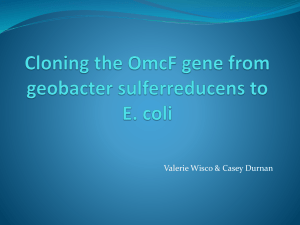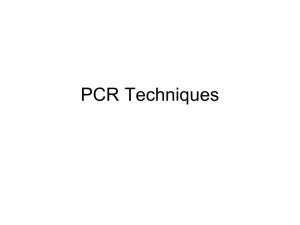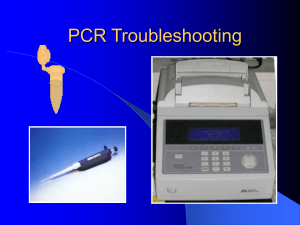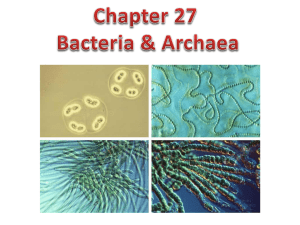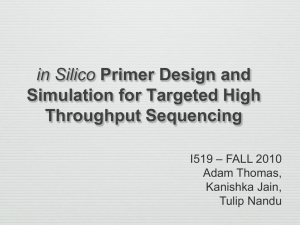Text S1 Supplemental Materials and Methods Plasmid construction
advertisement
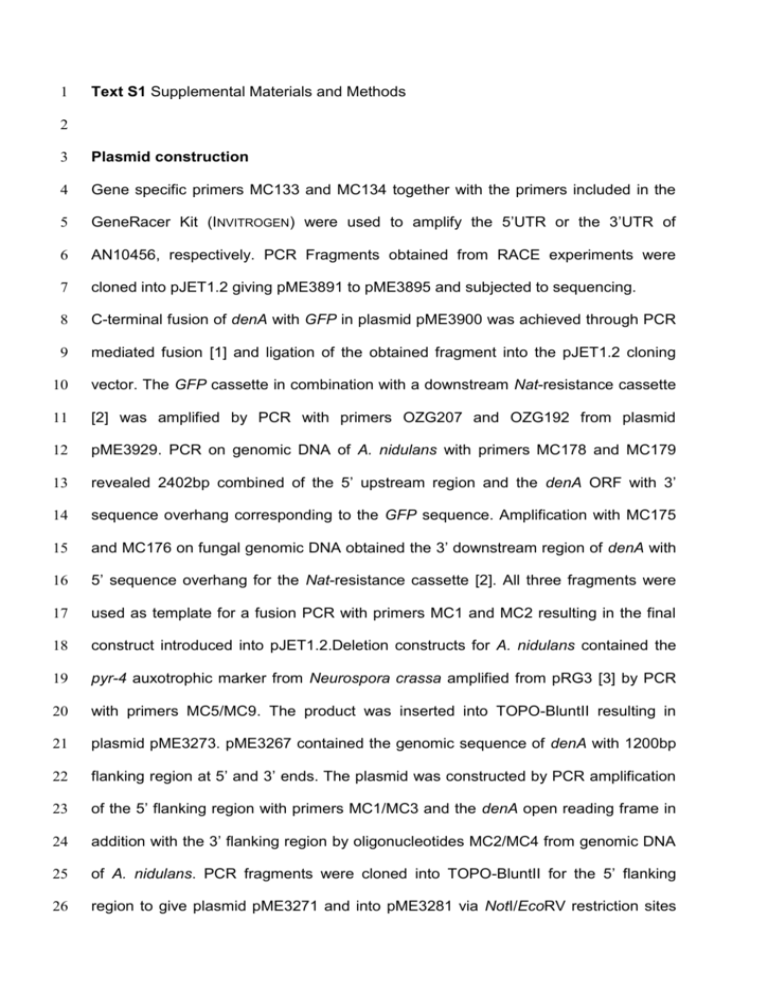
1 Text S1 Supplemental Materials and Methods 2 3 Plasmid construction 4 Gene specific primers MC133 and MC134 together with the primers included in the 5 GeneRacer Kit (INVITROGEN) were used to amplify the 5’UTR or the 3’UTR of 6 AN10456, respectively. PCR Fragments obtained from RACE experiments were 7 cloned into pJET1.2 giving pME3891 to pME3895 and subjected to sequencing. 8 C-terminal fusion of denA with GFP in plasmid pME3900 was achieved through PCR 9 mediated fusion [1] and ligation of the obtained fragment into the pJET1.2 cloning 10 vector. The GFP cassette in combination with a downstream Nat-resistance cassette 11 [2] was amplified by PCR with primers OZG207 and OZG192 from plasmid 12 pME3929. PCR on genomic DNA of A. nidulans with primers MC178 and MC179 13 revealed 2402bp combined of the 5’ upstream region and the denA ORF with 3’ 14 sequence overhang corresponding to the GFP sequence. Amplification with MC175 15 and MC176 on fungal genomic DNA obtained the 3’ downstream region of denA with 16 5’ sequence overhang for the Nat-resistance cassette [2]. All three fragments were 17 used as template for a fusion PCR with primers MC1 and MC2 resulting in the final 18 construct introduced into pJET1.2.Deletion constructs for A. nidulans contained the 19 pyr-4 auxotrophic marker from Neurospora crassa amplified from pRG3 [3] by PCR 20 with primers MC5/MC9. The product was inserted into TOPO-BluntII resulting in 21 plasmid pME3273. pME3267 contained the genomic sequence of denA with 1200bp 22 flanking region at 5’ and 3’ ends. The plasmid was constructed by PCR amplification 23 of the 5’ flanking region with primers MC1/MC3 and the denA open reading frame in 24 addition with the 3’ flanking region by oligonucleotides MC2/MC4 from genomic DNA 25 of A. nidulans. PCR fragments were cloned into TOPO-BluntII for the 5’ flanking 26 region to give plasmid pME3271 and into pME3281 via NotI/EcoRV restriction sites 27 for the ORF in addition with the 3’ flanking region resulting in pME3272, respectively. 28 pME3281 is the pBluescriptII SK+ vector carrying a phleo resistance cassette. The 5’ 29 flanking region was excised from pME3271 by cutting with the restriction enzymes 30 BstEII/ClaI and ligated into the corresponding restriction sites in pME3272 giving 31 pME3267. Digestion with restriction enzymes MfeI/HpaI removed the denA coding 32 sequence from pME3267 but left the flanking regions required for homologous 33 recombination. The pyr4 marker cassette was excised by digestion with EcoRI/HpaI 34 from pME3273 and ligated into the MfeI/HpaI restriction sites of plasmid pME3267 35 giving plasmid pME3275. 36 PCR mediated fusion [1] of the csnG flanking regions to the ptrA resistance cassette 37 [4] was applied to obtain the csnG deletion cassette. 1.2 kb 5’ flanking region of 38 csnG, containing a downstream overhang for the ptrA cassette were amplified with 39 MC125/MC126 from genomic DNA. PCR with primers MC129/MC130 on genomic 40 DNA generated a 2.1 kb fragment of the csnG 3’ flanging region with an upstream 41 overhang for ptrA. The ptrA cassette with overhangs for each csnG flanking region 42 was amplified from pSK409 with primers MC127/MC128. All three PCR fragments 43 were assembled in a fusion PCR reaction with primers MC125 and MC130. The 44 deduced fragment was introduced into pJET1.2 resulting in plasmid pME3887. 45 The denA bait plasmid for yeast-2-hybrid interaction experiments was cloned by 46 amplifying the cDNA with primers MC71/MC72 containing EcoRI restriction sites. 47 PCR fragments were directly digested by EcoRI and ligated into the EcoRI sites of 48 pEG202 resulting in plasmid pME3874. Accordingly the nedd8 cDNAs were amplified 49 with primers MC91/MC92 (nedd8 precursor form), MC91/MC93 (mature nedd8), but 50 with flanking MfeI restriction sites. After digestion with MfeI they were ligated into the 51 EcoRI site of pJG4-5 resulting in pME3879 and pME3881, respectively. 52 Protein fusions with one half of a split YFP, for BiFC interaction studies, were 53 obtained by combined fusion PCR [1] and restriction site mediated cloning. The C- 54 terminal part of YFP (cYFP) was amplified with primers OLKM86 and OLKM87 and 55 the N-terminal YFP (nYFP) was obtained by primers OLKM91 and MC94 from 56 plasmid pME3674. csnG cDNA was amplified from plasmid pME2982 [5] with 57 MC96/MC97 and denA cDNA from pME3874 with MC32/MC94. The C-terminal half 58 of YFP was fused to the N-terminus of csnG in a fusion PCR with primers 59 MC97/OLKM86 and the N-terminal part of YFP to the N-terminus of denA in a PCR 60 with MC31/OLKM91. Plasmid pME3885 derived from subsequent introduction of the 61 C-terminal half of YFP into the PmeI site and the fusion of the N-terminal half of YFP 62 with denA into the SwaI site of pSK409, serving as control for unspecific interaction of 63 split YFP. pME3886 originates as well from pSK409, subsequently added with 64 cYFP:csnG fusion to the PmeI site and nYFP:denA to the SwaI site. 65 For heterologous expression in yeast the denA cDNA was amplified with 66 MC30/MC31 or MC30/MC32 lacking the stop codon at the denA C-terminus, 67 respectively. Both fragments were cloned by TA overhangs into pYES2.1 TOPO-TA 68 to give plasmids pME3278 and pME3279. Expression of denA was driven by the 69 inducible GAL1 promoter. 70 For overexpression and purification of recombinant denA the cDNA fragment was 71 excised from plasmid pME3874 with EcoRI and ligated into the accordingly linearized 72 pGEX4-T1 resulting in plasmid pME3889. 73 DEN1 was cloned from a cDNA clone obtained from IMAGENE and flanked by 74 appropriate restriction sites using the following Primers: DEN1_fw and DEN1_rv. 75 CSN1 and the CSN1 fragments were published before [6]. For transient transfection 76 pcDNA3.1 (INVITROGEN) vectors coding for N-terminal Flag- or His-tag were used. 77 78 Aspergillus and Yeast strain construction 79 AGB640 containing a C-terminal fusion of denA with GFP and the mrfp::H2A 80 construct was obtained by transformation of AGB152 with pME3900 resulting in 81 AGB634 and subsequent transformation with pME3858. Homologous recombination 82 of denA with the GFP fusion construct was proven by Southern hybridization and 83 ectopic integration of the mrfp::H2A construct was verified by microscopy. To obtain 84 csnG deletion in AGB640 the strain was transformed with the deletion cassette 85 excised from plasmid pME3887 with the restriction enzyme XhoI. The cassette 86 mediated resistance against pyridthyamine and was targeted to the csnG locus. 87 Successful integration of the deletion construct at the endogenous csnG locus was 88 verified by Southern analysis resulting in strain AGB708. 89 Transformation and selection for uridine/uracil prototrophy was applied to obtain 90 homologous integration of the linear denA deletion cassette excised with ClaI/NotI 91 from pME3275 in strain AGB152 resulting in the ∆denA strain AGB316. Integration 92 was checked by Southern analysis. Complementation was achieved by ectopic 93 integration of the linearized pME3267 in AGB316 through transformation and 94 selection 95 Transformants were checked by PCR and Southern hybridization. 96 Strain AGB461 containing a processed variant of Nedd8 (nedd8m) at the 97 endogenous locus, combined with the deletion for denA was obtained by genetic 98 crossing of strains AGB457 [7] and ABG316 accomplished by Marcia von Zeska 99 Kress. Positive clones were verified by Southern analysis of each locus. The 100 denA/csnE double knock-out AGB632 was obtained by transformation of AGB466 101 with the denA deletion cassette excised with ClaI/NotI from pME3275. 102 BiFC plasmids pME3885 and pME3886 were transformed into AGB316 resulting in 103 AGB630 and AGB644, respectively. Ectopic integration was verified by Southern for the phleomycine resistance marker giving strain AGB318. 104 analysis. Clones were selected on medium containing phleomycine and lacking 105 uridine and uracil. 106 For heterologous expression of A. nidulans proteins S. cerevisiae strain Y03914 and 107 Y06911 (EUROSCARF strain collection) were transformed with the plasmids pME3278 108 and pME3279 and subsequently with pME3280. Wild type strain BY4741 was 109 transformed with plasmid pME3280 as control. Positive transformants were selected 110 on synthetic complex medium [(0.15% yeast nitrogen base without amino acids and 111 (NH4)2SO4, 0.5% (NH4)2SO4, 0.2 mM myo-inositol, 0.2% amino acid mix (2 g of each 112 standard-L-amino acid except L-histidine, L-leucine, L-tryptophan plus 2 g L-adenine 113 and 0.2 g p-aminobenzoate] lacking histidine and uracil. A. nidulans denA and culD 114 were expressed in S. cerevisiae wild type BY4741 or ∆rri1/csn5 deletion mutant 115 Y03914 driven by the inducible GAL1 promoter (denA) or the constitutive ADH1 116 promoter (culD). Resulting DenA was either native or C-terminally fused with a 117 V5/His6 epitope tag. CulD represents an N-terminal fusion with bacterial LexA. 118 S. cerevisiae strains for yeast-2-hybrid tests were obtained in a similar way. 119 Derivatives of the 2-hybrid prey plasmid pJG4-5 containing the cDNA of each csn 120 subunit (pME2501, pME2978-79, pME2357, pME2980-83) were used from a 121 previous study [5]. Plasmid pME3922 containing the denA cDNA was used as bait. 122 Bait and prey plasmids were subsequently transformed into S. cerevisiae EGY48- 123 p1840 and transformants were selected on synthetic complex medium [(0.15% yeast 124 nitrogen base without amino acids and (NH4)2SO4, 0.5% (NH4)2SO4, 0.2 mM myo- 125 inositol, 0.2% amino acid mix (2 g of each standard-L-amino acid except L-histidine, 126 L-leucine, L-tryptophane, 127 uracil, histidine and tryptophane. plus 2 g 128 129 Supplemental references L-adenine and 0.2 g p-aminobenzoate] lacking 130 131 132 133 134 1. Szewczyk E, Nayak T, Oakley CE, Edgerton H, Xiong Y, et al. (2006) Fusion PCR and gene targeting in Aspergillus nidulans. Nat Protoc 1: 3111-3120. 2. Goldstein AL, McCusker JH (1999) Three new dominant drug resistance cassettes for gene disruption in Saccharomyces cerevisiae. Yeast 15: 1541-1553. 3. Waring RB, May GS, Morris NR (1989) Characterization of an inducible expression 135 system in Aspergillus nidulans using alcA and tubulin-coding genes. Gene 79: 136 119-130. 137 4. Kubodera T, Yamashita N, Nishimura A (2000) Pyrithiamine resistance gene (ptrA) 138 of Aspergillus oryzae: cloning, characterization and application as a dominant 139 selectable marker for transformation. Biosci Biotechnol Biochem 64: 1416-1421. 140 5. Busch S, Schwier EU, Nahlik K, Bayram O, Helmstaedt K, et al. (2007) An eight- 141 subunit COP9 signalosome with an intact JAMM motif is required for fungal fruit 142 body formation. Proceedings of the National Academy of Sciences of the United 143 States of America 104: 8089-8094. 144 6. Huang X, Langelotz C, Hetfeld-Pechoc BK, Schwenk W, Dubiel W (2009) The 145 COP9 signalosome mediates beta-catenin degradation by deneddylation and 146 blocks adenomatous polyposis coli destruction via USP15. Journal of Molecular 147 Biology 391: 691-702. 148 7. Zhou Z, Wang Y, Cai G, He Q (2012) Neurospora COP9 signalosome integrity 149 plays major roles for hyphal growth, conidial development, and circadian function. 150 PLoS Genet 8: e1002712. 151 152


